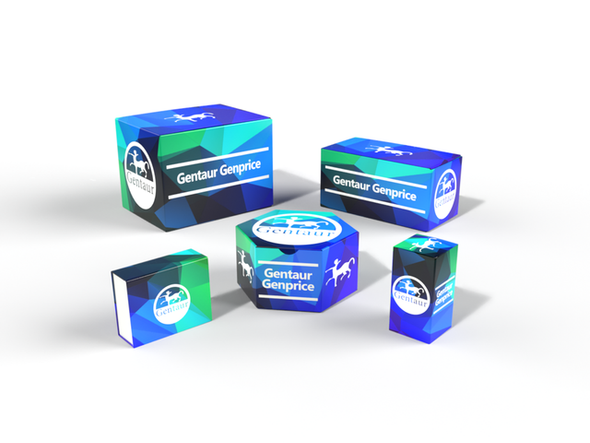451 Recombinant Proteins and Cell culture
Fer1 | Ferritin 1 (pre-apoferritin) | AS06 126
- SKU:
- 451-AS06 126
- Availability:
- Usually ships in 5 working days
Description
Fer1 | Ferritin 1 (pre-apoferritin) | AS06 126 | Gentaur UK, US & Europe Distribution
Immunogen: KLH-conjugated synthetic peptide derived from Chlamydomonas reinhardtii ferritin1 protein sequence Q8LRU1
Host: Rabbit
Conjugation: N/A
Clonality: Polyclonal
Isotype: N/A
Purity: Serum
Format: Lyophilized
Tested Application: Western blot (WB)
Related Products: AS06 196 Anti-Fer2 | ferritin 2, rabbit antibodiesCollection of antibodies to Chlamydomonas proteinsPlant protein extraction buffer Secondary antibodies
Recommended Dilutions: 1 : 1000 (WB)
Molecular weight: 27 (with transit peptide) | 25 for Chlamydomonas reinhardtii
Confirmed Reactivity: Chlamydomonas reinhardtii
Predicted Reactivity: Chlamydomonas reinhardtii
Not reactive in: No confirmed exceptions from predicted reactivity are currently known
Additional Information: A picture with a western blot application sample can be obtained from the reference given below
Background: Ferritin is the major iron storage protein complex in eukaryotic cells, consisting of 24 ferritin subunit polypeptides. In Chlamydomonas reinhardtii 2 isoforms, ferritin1 (Fer1) and ferritin2 (Fer2) are present. Both are plastid localized but Fer1 is quantitatively recovered in soluble extracts of cells while Fer2 is found in the particulate fraction. Partial purification of the Fer1 complex indicates that the two ferritins are associated in distinct complexes and do not coassemble. The ratio of Fer1 to Fer2 in iron-replete cells is 70:1 and indicates a more dominant role of Fer1 in iron homeostasis.
Reconstitution: For reconstitution add 200 µl of sterile water
Storage: Store lyophilized/reconstituted at -20°C; once reconstituted make aliquots to avoid repeated freeze-thaw cycles. Please remember to spin the tubes briefly prior to opening them to avoid any losses that might occur from material adhering to the cap or sides of the tube.
TAIR Nnumbre: N/A
Category: Ion metabolism
Research Area: Metabolomics






